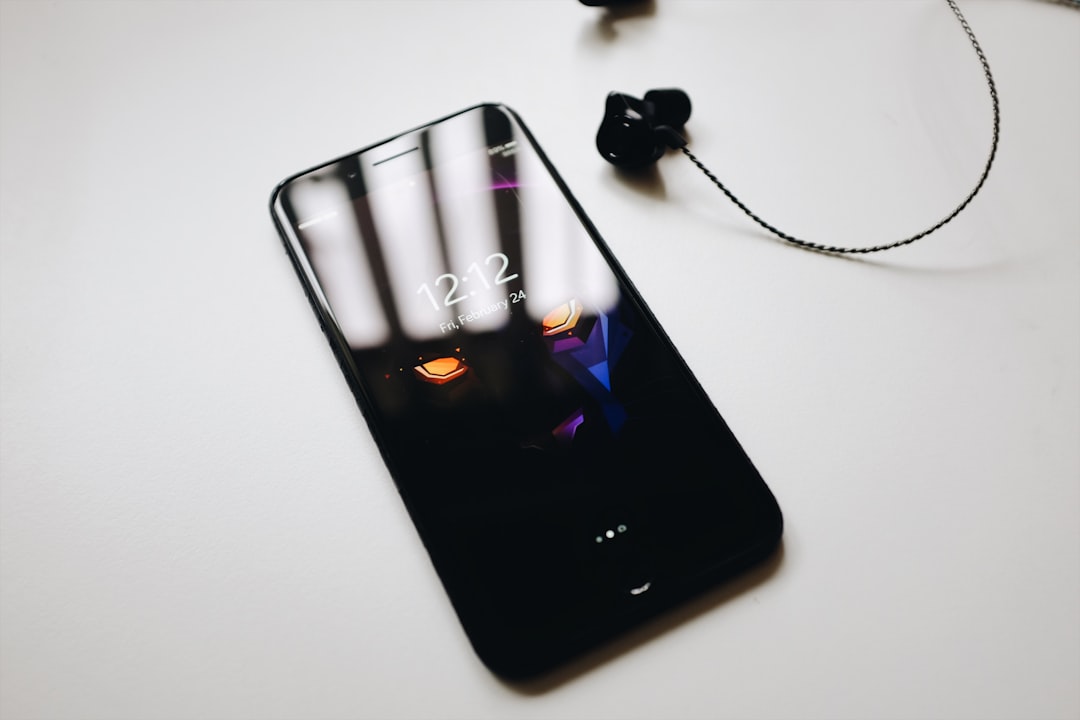The iPhone 17 has become a focal point of speculation and excitement among tech enthusiasts and Apple aficionados alike. As the latest iteration in Apple’s iconic smartphone lineup, it is poised to build upon the legacy of its predecessors while introducing innovative features that cater to the evolving needs of consumers. With each new release, Apple has consistently pushed the boundaries of technology, and the iPhone 17 is expected to be no exception.
The anticipation surrounding its launch is palpable, fueled by rumors, leaks, and the company’s own marketing strategies. Apple’s iPhone series has historically set benchmarks in the smartphone industry, influencing design trends, user interface paradigms, and technological advancements. The iPhone 17 is expected to continue this tradition, potentially redefining user experiences with enhancements in performance, camera capabilities, and software integration.
As we delve into the anticipated features and upgrades of this device, it becomes clear that Apple is not merely aiming to keep pace with competitors but rather to lead the charge in smartphone innovation.
Key Takeaways
- The iPhone 17 is the latest model in Apple’s smartphone lineup, featuring advanced technology and design updates.
- Anticipated features and upgrades include a faster processor, improved camera capabilities, and enhanced battery life.
- The potential price range for the iPhone 17 is expected to be in line with previous models, ranging from 9 to ,099 depending on storage capacity and model.
- Compared to previous iPhone models, the iPhone 17 is expected to have significant performance improvements and new features.
- Factors influencing the price of the iPhone 17 include the cost of components, research and development, and market demand.
Anticipated Features and Upgrades
One of the most exciting aspects of the iPhone 17 is the potential for groundbreaking features that could significantly enhance user experience. Rumors suggest that Apple may introduce a new A17 chip, which would provide improved processing power and energy efficiency. This chip is expected to leverage advanced manufacturing techniques, possibly utilizing a 3nm process, which would allow for more transistors on a single chip.
Such advancements could lead to faster app launches, smoother multitasking, and enhanced gaming experiences, making the iPhone 17 a powerhouse in mobile computing. In addition to performance upgrades, the iPhone 17 is rumored to feature significant improvements in camera technology. Apple has consistently prioritized photography in its devices, and the upcoming model may include a larger sensor for better low-light performance and enhanced image stabilization.
Furthermore, there are whispers of advanced computational photography features that could rival professional cameras. The introduction of new lenses or improved optical zoom capabilities could also elevate mobile photography to new heights, appealing to both casual users and photography enthusiasts.
Potential Price Range

As with any new iPhone release, pricing remains a critical consideration for potential buyers. While Apple has not officially announced the price of the iPhone 17, industry analysts speculate that it will fall within a similar range as its predecessor, the iPhone 16. Historically, Apple has maintained a premium pricing strategy, reflecting the quality and innovation embedded in its products.
Therefore, consumers can expect a starting price around $999 for the base model, with higher configurations commanding even steeper prices. However, it is essential to consider that pricing can vary based on storage options and additional features. For instance, models with increased storage capacity or advanced features like ProMotion displays or enhanced camera systems may see price tags exceeding $1,200 or more.
Additionally, market dynamics and competition from other smartphone manufacturers could influence Apple’s pricing strategy. If competitors release compelling devices at lower price points, Apple may need to adjust its pricing structure to maintain its market share.
Comparison to Previous iPhone Models
| Feature | iPhone 11 | iPhone 12 | iPhone 13 |
|---|---|---|---|
| Display Size | 6.1 inches | 6.1 inches | 6.1 inches |
| Camera | Dual 12MP Ultra Wide and Wide cameras | Dual 12MP Ultra Wide and Wide cameras | Dual 12MP Ultra Wide and Wide cameras |
| Processor | A13 Bionic | A14 Bionic | A15 Bionic |
| Battery Life | Up to 17 hours video playback | Up to 17 hours video playback | Up to 19 hours video playback |
To fully appreciate what the iPhone 17 brings to the table, it is essential to compare it with previous models in the lineup. The iPhone 16 introduced several noteworthy features such as improved battery life and enhanced display technology. However, many users felt that while these upgrades were significant, they did not represent a revolutionary leap forward.
In contrast, the iPhone 17 is anticipated to offer more substantial enhancements that could redefine user expectations. For example, if we look back at the transition from the iPhone 12 to the iPhone 13, we saw significant improvements in battery life and camera capabilities. The iPhone 13’s introduction of Cinematic mode for video recording was a game-changer for content creators.
The iPhone 17 is expected to build on this foundation by incorporating even more advanced video recording features and possibly introducing new software capabilities that leverage artificial intelligence for enhanced user experiences. This evolution from one model to another illustrates Apple’s commitment to continuous improvement while also highlighting how each generation builds upon its predecessors.
Factors Influencing the Price
Several factors play a crucial role in determining the price of the iPhone 17. One of the most significant influences is the cost of materials and components used in manufacturing the device. As technology advances, certain components may become more expensive due to increased demand or supply chain constraints.
For instance, if Apple opts for cutting-edge materials like titanium or advanced display technologies such as OLED or mini-LED screens, these choices could drive up production costs. Additionally, global economic conditions can impact pricing strategies. Fluctuations in currency exchange rates can affect Apple’s pricing in different markets around the world.
For example, if the U.S. dollar strengthens against other currencies, international prices may rise accordingly. Furthermore, tariffs and trade policies can also influence costs; any changes in import duties on electronic components could lead to adjustments in retail prices.
Potential Discounts and Trade-in Options

Apple has long offered trade-in programs that allow customers to exchange their old devices for credit towards a new purchase. This initiative not only encourages users to upgrade but also promotes sustainability by reducing electronic waste. With the launch of the iPhone 17, it is likely that Apple will continue this practice, providing customers with an opportunity to offset some of the costs associated with purchasing a new device.
In addition to trade-in options, seasonal promotions and discounts may also be available during specific times of the year. For instance, Black Friday or back-to-school sales often see retailers offering discounts on Apple products. While Apple itself may not significantly reduce prices during these events, authorized resellers might provide competitive offers that make purchasing an iPhone 17 more financially feasible for consumers.
Considerations for Purchasing
When contemplating a purchase of the iPhone 17, several factors should be taken into account beyond just price and features. One critical consideration is whether to buy directly from Apple or through a carrier. Purchasing through a carrier may offer financing options or bundled services that can make acquiring a new device more manageable financially.
However, buying directly from Apple often provides greater flexibility regarding unlocked devices and compatibility with various networks. Another important aspect is assessing individual needs versus wants. While it can be tempting to opt for the highest-end model with all available features, consumers should evaluate what they genuinely require from their smartphone experience.
For instance, if photography is not a primary concern, investing in a model with advanced camera capabilities may not be necessary. Understanding personal usage patterns can help buyers make informed decisions that align with their lifestyle and budget.
Conclusion and Final Thoughts
The iPhone 17 represents more than just another smartphone release; it embodies Apple’s ongoing commitment to innovation and excellence in technology. With anticipated features that promise to enhance performance and user experience significantly, it stands poised to capture the attention of both loyal customers and potential new users alike. As we await its official unveiling, discussions surrounding pricing strategies and comparisons with previous models highlight the complexities involved in consumer decision-making.
Ultimately, whether one chooses to upgrade or hold onto their current device will depend on various factors including personal preferences, financial considerations, and technological needs. The excitement surrounding the iPhone 17 serves as a reminder of how far mobile technology has come and how it continues to shape our daily lives in profound ways. As we look forward to its release, one thing remains clear: Apple’s influence on the smartphone market is as strong as ever.
If you are curious about the latest iPhone models and their features, you may also be interested in learning about the pricing of the iPhone 17. To find out more about how much the iPhone 17 costs, you can check out this article on getiphoneinfo.com. This article provides detailed information on the pricing of the iPhone 17 and what features you can expect from this latest model.










